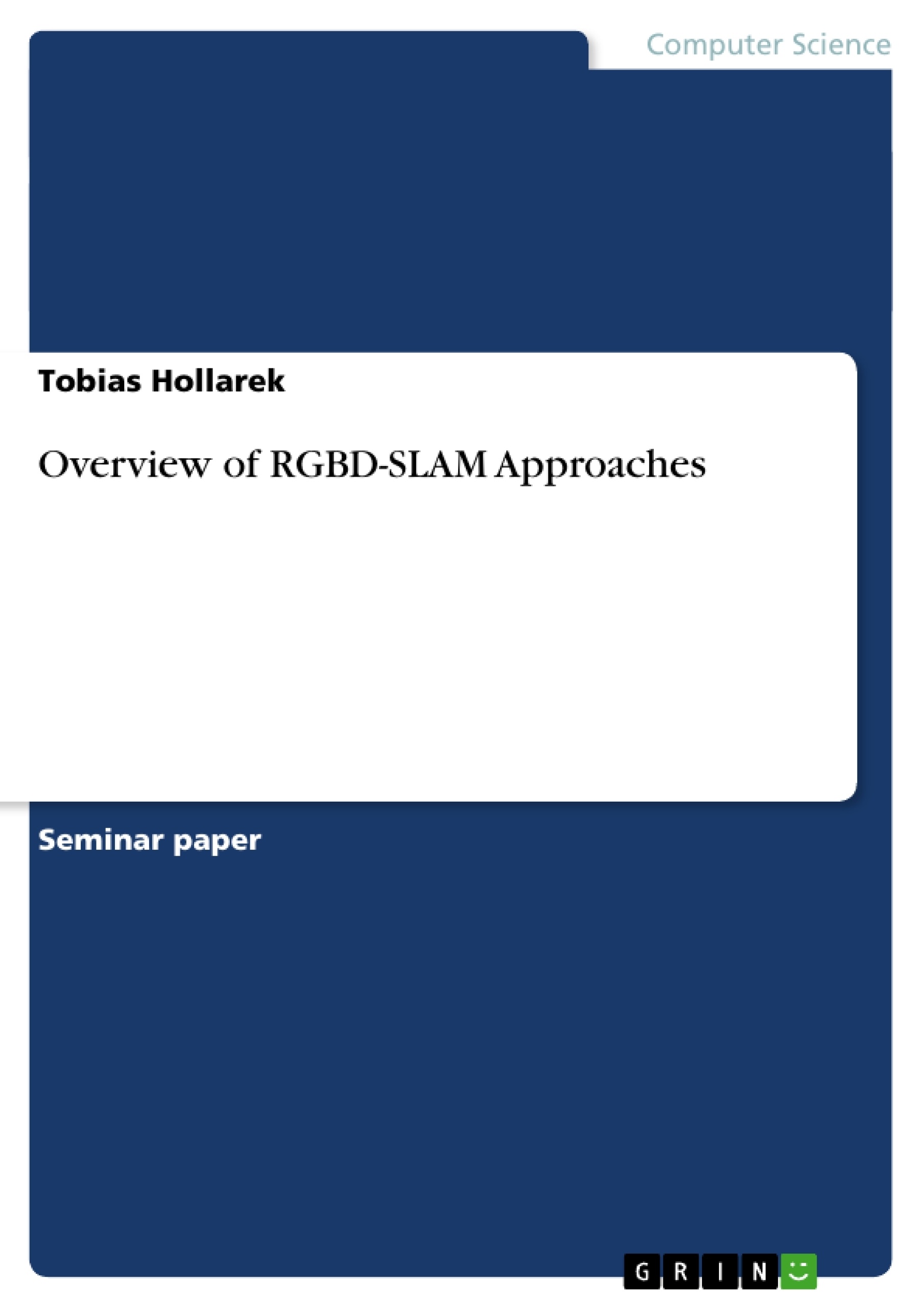In this paper I will introduce the reader to RGB-D SLAM which has become the focus of interest for many researchers lately. This is due to the development and distribution of cheap RGB-D sensor devices such as the Microsoft Kinect. After an introduction I will present which steps have to be taken to implement a working SLAM system using RGB-D data. In section three I will introduce three different approaches and will present how they implemented the SLAM and what they did to increase speed, accuracy and robustness of their algorithms. I will then compare the results of all approaches. In the next section I will present what optimization methods two of these approaches implemented to improve their mapping by optimizing with a global approach. These implementations also are reviewed and compared as far as that was possible. In section five I will present how two different approaches store the mapping after all calculation is done in a sophisticated and compact way. Finally I will conclude over the results I collected and give an outlook on possible future developments.
Inhaltsverzeichnis (Table of Contents)
- Introduction
- RGB-D SLAM
- pose estimation and frame alignment
- global map alignment
- pose estimation and map alignment
- RGBD-ICP from Henry et al. [1]
- SLAM Front-End of Endres et al. [2]
- Visual Odometry by Audras et al. [3]
- global map alignment
- global optimization from Henry et al. [1]
- SLAM Back-end by Endres et al. [2]
- internal map representation
- surfel representation
- 3D occupancy grid maps
- conclusion and outlook
Zielsetzung und Themenschwerpunkte (Objectives and Key Themes)
This paper explores the concept of RGB-D SLAM, a technique used in robotics and other applications for building maps of unknown environments while simultaneously localizing a robot's position within that map. The paper focuses on the application of RGB-D sensors, particularly the Microsoft Kinect, which provide both color and depth information, enabling the creation of detailed 3D maps.
- Overview of RGB-D SLAM: The paper introduces the basic principles of RGB-D SLAM, outlining its two main steps: pose estimation and frame alignment, followed by global map optimization.
- Comparison of Approaches: The paper examines three different RGB-D SLAM systems, highlighting their similarities and differences, and evaluating their performance in terms of efficiency, robustness, and accuracy.
- Global Map Alignment: The paper delves into methods for global map alignment, specifically discussing loop closure detection and global optimization techniques used to improve the accuracy and consistency of maps created using RGB-D SLAM.
- Internal Map Representation: The paper explores different methods for representing the resulting map internally, focusing on surfel representation and 3D occupancy grid maps.
- Potential Future Developments: The paper concludes by discussing future directions and potential advancements in the field of RGB-D SLAM.
Zusammenfassung der Kapitel (Chapter Summaries)
The Introduction provides an overview of Simultaneous Localization and Mapping (SLAM) and highlights the emergence of RGB-D SLAM using consumer devices like the Microsoft Kinect. The second chapter, "RGB-D SLAM", discusses the basic principles of RGB-D SLAM, outlining the two crucial steps: pose estimation and frame alignment, and global map optimization. The third chapter, "pose estimation and map alignment", delves into three different RGB-D SLAM systems: RGBD-ICP from Henry et al. [1], SLAM Front-End from Endres et al. [2], and Visual Odometry by Audras et al. [3]. The fourth chapter, "global map alignment", explores the concept of loop closure detection and global optimization techniques utilized by Henry et al. [1] and Endres et al. [2] to enhance map accuracy. The fifth chapter, "internal map representation", examines two methods for storing maps: surfel representation and 3D occupancy grid maps. The paper concludes with an overview of the presented results and a discussion on potential future developments in the field of RGB-D SLAM.
Schlüsselwörter (Keywords)
The key terms and concepts explored in this work include RGB-D SLAM, pose estimation, frame alignment, global map alignment, loop closure detection, global optimization, surfel representation, 3D occupancy grid maps, Microsoft Kinect, and various algorithms such as ICP, RANSAC, and bundle adjustment.
- Quote paper
- Tobias Hollarek (Author), 2012, Overview of RGBD-SLAM Approaches, Munich, GRIN Verlag, https://www.grin.com/document/264677



